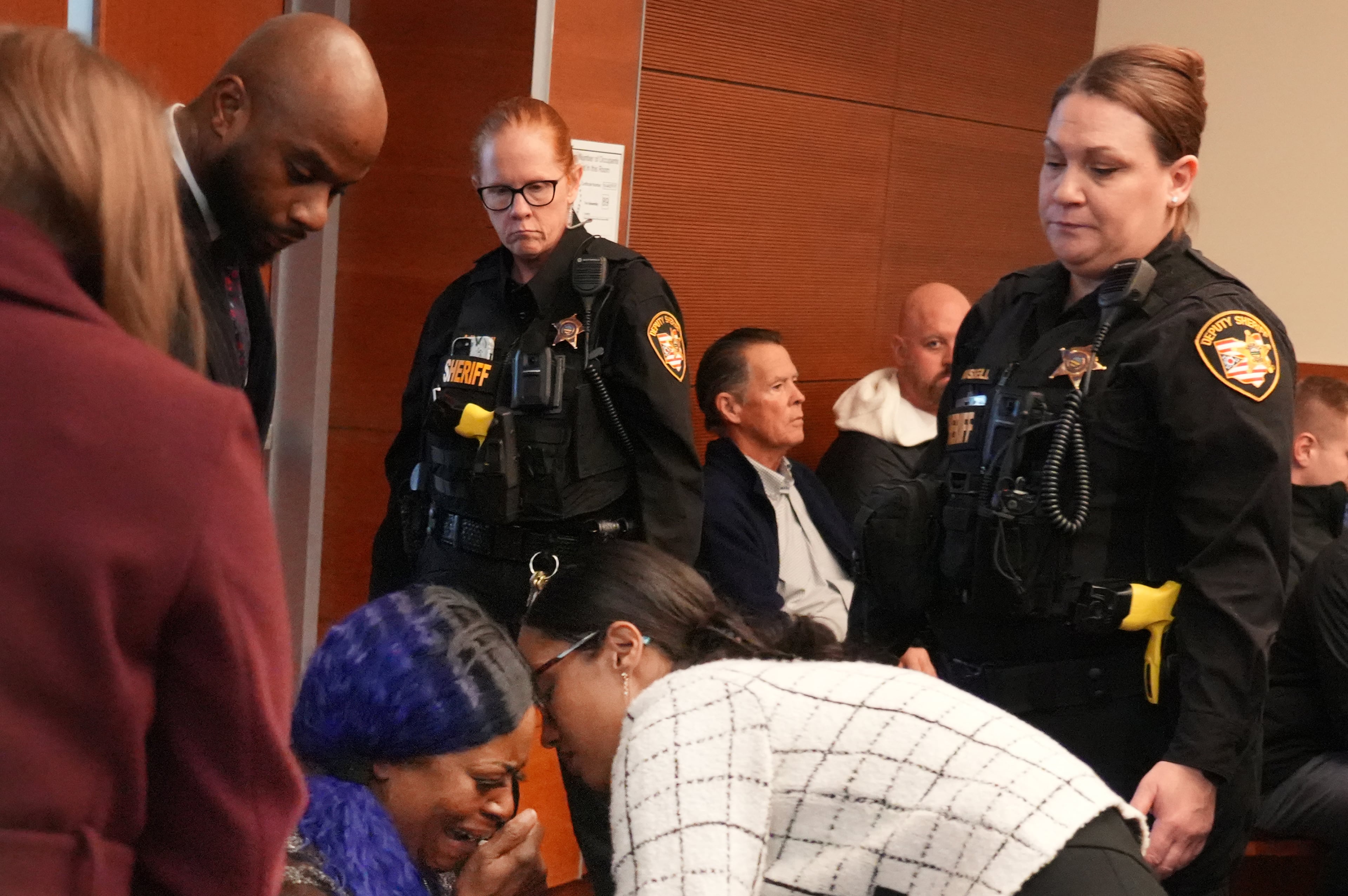Metro Atlanta road rage: Routine drives can quickly turn violent, experts say

Teria McCrary was driving in Smyrna with her fiance and three children after celebrating Father’s Day when she said she saw another driver speeding, honking his horn and cutting people off behind her.
The stranger pulled up beside her vehicle, cursing at her as she moved over to make a left turn, she told The Atlanta Journal-Constitution.
Suddenly, McCrary said the man pulled out a gun and began shooting — one of several violent encounters involving angry drivers to occur on metro Atlanta roads in recent weeks.
Her fiance, Eric Rushing, seated in the front passenger seat, fired back in a wild exchange of gunfire between the two moving cars on Spring Road before McCrary could maneuver her vehicle out of danger, she said.
When the barrage was over, McCrary discovered her 6-year-old son, Asher, had been struck by a bullet in the abdomen while sitting in the backseat with his 4-year-old and 8-month-old siblings.
Four surgeries later, Asher is stable but still being closely monitored by doctors in the hospital, McCrary said.
Both Rushing and the other driver, identified by police as Craig Calhoun, are facing several charges and are in the Cobb County jail, according to online records. Jail records do not yet list an attorney for Calhoun or Rushing.
“It was very traumatic,” McCrary said of the road rage incident. “He was literally a complete stranger.”
Similar scenes have played out far too often across metro Atlanta. Several times over the past three weeks, on both city streets and more rural roadways, drivers have pulled out guns and fired at other motorists. Experts said the rash of violence illustrate how common driving irritations can quickly turn into dangerous road rage incidents.
What started with honking, tailing and yelling between two Gwinnett County motorists ended May 30 with a man pulling out his gun and shooting at the other car, according to a police report. No one was injured.
On June 9, an Alabama father was shot and killed after he allegedly threw a lit cigarette at another driver and got out of his car wielding a knife in Paulding County, an arrest warrant states.
And last week, a verbal dispute between drivers in Atlanta turned deadly when one fired a gun, striking a 62-year-old motorist and causing him to swerve his vehicle into a vacant house, according to a police report. Police have not named the shooter or made an arrest.
In just about every case of road rage, the incident begins with a minor infraction, the kind seen and experienced by many Atlanta commuters. Cutting off another vehicle in traffic, swerving around cars, running red lights or forgetting to use a turn signal are a few, often agitating, examples.
So how do these everyday driving situations spiral into violence?
Dwight Hennessy, a psychology professor at Buffalo State University, has studied traffic psychology, aggression and road rage for 25 years. He’s also driven here before.
“You have my condolences. Driving in Atlanta is nuts,” he said, in a phone interview with the AJC.
Road rage can happen anywhere at any time, not just on city streets or during peak traffic times, as the wildly different recent incidents across metro Atlanta depict. Several factors go into whether someone will engage in a conflict on the roads, and it’s largely dependent on the individual driver’s personality, Hennessy said.
Seemingly harmless encounters can escalate, especially when drivers believe someone else intentionally inconvenienced or endangered them, Hennessy said. A driver who feels unsafe or threatened may retaliate or be more likely to seek revenge if they feel they’ve been wronged, he said.
“Things happen that make us acutely aware of danger: Somebody cuts us off, somebody’s driving too slow, somebody’s driving too fast, somebody’s using the shoulder to pass,” he said. “Somebody did something to you, and you can do something about it. Do you see how that escalation potential just reared its ugly head?”
The late May road rage incident in Gwinnett spiraled quickly, a review of police records shows. One driver, Arthur Brodeur, told police he honked at another driver, Kenneth Wolf, who Brodeur said took too long to make a turn. Wolf then yelled at him from his window and followed Brodeur into a parking lot, leading him to fear Wolf might hurt him, Brodeur told police. That’s when Brodeur pulled out his gun and fired toward Wolf’s vehicle “to scare him to get Wolf to leave him alone,” the police report stated.
But in Wolf’s account, he said he believed Brodeur had clipped his front bumper and was trying to flee the scene. So Wolf tried to get him to pull over and followed him into the parking lot, he told police. When Wolf pulled up beside him to talk about the incident, Brodeur began firing at his car, shattering the rear passenger-side window, the police report said.
What might have started with honking ended with bullets flying. Brodeur is in jail facing a felony aggravated assault charge. His attorney, Kayla Bumpus, did not comment on the case but said her client is innocent and looks forward to proving so in court. Wolf declined to comment.
Being in a car can give drivers a sense of anonymity, changing the way they view others and how they may act, Hennessy said. Sometimes, he said, they may do things on the road that they wouldn’t when face to face with another person.
“That’s what the anonymity of the vehicle does. It gives us a power, in some ways, and it releases us in other ways, from the social norms that we tend to follow,” Hennessy said.
People also bring unrelated stresses into the car that can affect their mood and their tolerance for agitating situations.
“Road rage incidents can escalate quickly. You don’t know what mental state the other individual driving the car is in,” Gwinnett police Cpl. Ryan Winderweedle said. “They could have been having a bad day from something at work, and getting into a minor fender bender or being cut off triggers them to some kind of outrage over something that should be a pretty minor inconvenience.”
To avoid escalation, those involved in a road rage incident should not engage with the other motorist.
“The best thing to do is just call 911 immediately,” Winderweedle said. “Don’t attempt to follow the other person because that’s going to put you, potentially, into danger, especially if shots are fired.”
McCrary and her children’s encounter has left the family distraught. Her 4-year-old daughter isn’t coping well and keeps talking about the gunshots, and McCrary lies awake at night replaying the incident in her mind.
Asher, meanwhile, has a long road to recovery. The bullet punctured his stomach, liver and gallbladder, McCrary said. He’ll have to eat through a feeding tube for a while before beginning physical therapy. The family is raising money through GoFundMe to help cover medical costs and other expenses.
“He’s just a sweet, loving boy, and he didn’t deserve to go through this,” McCrary said.



